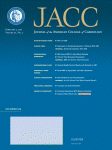 DMD is a debilitating X-linked disease that afflicts as many as 1 in 3,500 boys. Although steroids slow musculoskeletal impairment, the effects on cardiac function and mortality remain unknown. This study aimed to determine the impact of steroid therapy on cardiomyopathy and mortality in patients with Duchenne muscular dystrophy (DMD). A cohort study was conducted on patients with DMD treated with renin-angiotensin-aldosterone system antagonists with or without steroid therapy. Eighty-six patients, 9.1 ± 3.5 years of age, were followed for 11.3 ± 4.1 years. Seven of 63 patients (11%) receiving steroid therapy died compared with 10 of 23 (43%) not receiving steroid therapy (p = 0.0010). Overall survival rates at 5, 10, and 15 years of follow-up were 100%, 98.0%, and 78.6%, respectively, for patients receiving steroid therapy versus 100%, 72.1%, and 27.9%, respectively, for patients not receiving steroid therapy (log-rank p = 0.0005). In multivariate propensity-adjusted analyses, steroid use was associated with a 76% lower mortality rate (hazard ratio: 0.24; 95% confidence interval: 0.07 to 0.91; p = 0.0351). The mortality reduction was driven by fewer heart failure-related deaths (0% vs. 22%, p = 0.0010). In multivariate analyses, steroids were associated with a 62% lower rate of new-onset cardiomyopathy (hazard ratio: 0.38; 95% confidence interval: 0.16 to 0.90; p = 0.0270). Annual rates of decline in left ventricular ejection fraction (-0.43% vs. -1.09%, p = 0.0101) and shortening fraction (-0.32% vs. -0.65%, p = 0.0025) were less steep in steroid-treated patients. Consistently, the increase in left ventricular end-diastolic dimension was of lesser magnitude (+0.47 vs. +0.92 mm per year, p = 0.0105). In patients with DMD, steroid therapy is associated with a substantial reduction in all-cause mortality and new-onset and progressive cardiomyopathy.
DMD is a debilitating X-linked disease that afflicts as many as 1 in 3,500 boys. Although steroids slow musculoskeletal impairment, the effects on cardiac function and mortality remain unknown. This study aimed to determine the impact of steroid therapy on cardiomyopathy and mortality in patients with Duchenne muscular dystrophy (DMD). A cohort study was conducted on patients with DMD treated with renin-angiotensin-aldosterone system antagonists with or without steroid therapy. Eighty-six patients, 9.1 ± 3.5 years of age, were followed for 11.3 ± 4.1 years. Seven of 63 patients (11%) receiving steroid therapy died compared with 10 of 23 (43%) not receiving steroid therapy (p = 0.0010). Overall survival rates at 5, 10, and 15 years of follow-up were 100%, 98.0%, and 78.6%, respectively, for patients receiving steroid therapy versus 100%, 72.1%, and 27.9%, respectively, for patients not receiving steroid therapy (log-rank p = 0.0005). In multivariate propensity-adjusted analyses, steroid use was associated with a 76% lower mortality rate (hazard ratio: 0.24; 95% confidence interval: 0.07 to 0.91; p = 0.0351). The mortality reduction was driven by fewer heart failure-related deaths (0% vs. 22%, p = 0.0010). In multivariate analyses, steroids were associated with a 62% lower rate of new-onset cardiomyopathy (hazard ratio: 0.38; 95% confidence interval: 0.16 to 0.90; p = 0.0270). Annual rates of decline in left ventricular ejection fraction (-0.43% vs. -1.09%, p = 0.0101) and shortening fraction (-0.32% vs. -0.65%, p = 0.0025) were less steep in steroid-treated patients. Consistently, the increase in left ventricular end-diastolic dimension was of lesser magnitude (+0.47 vs. +0.92 mm per year, p = 0.0105). In patients with DMD, steroid therapy is associated with a substantial reduction in all-cause mortality and new-onset and progressive cardiomyopathy.
